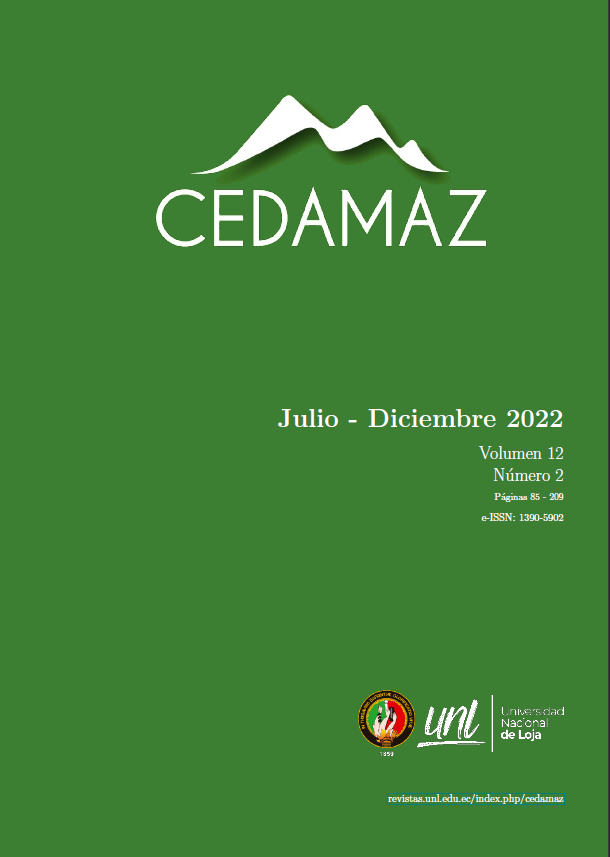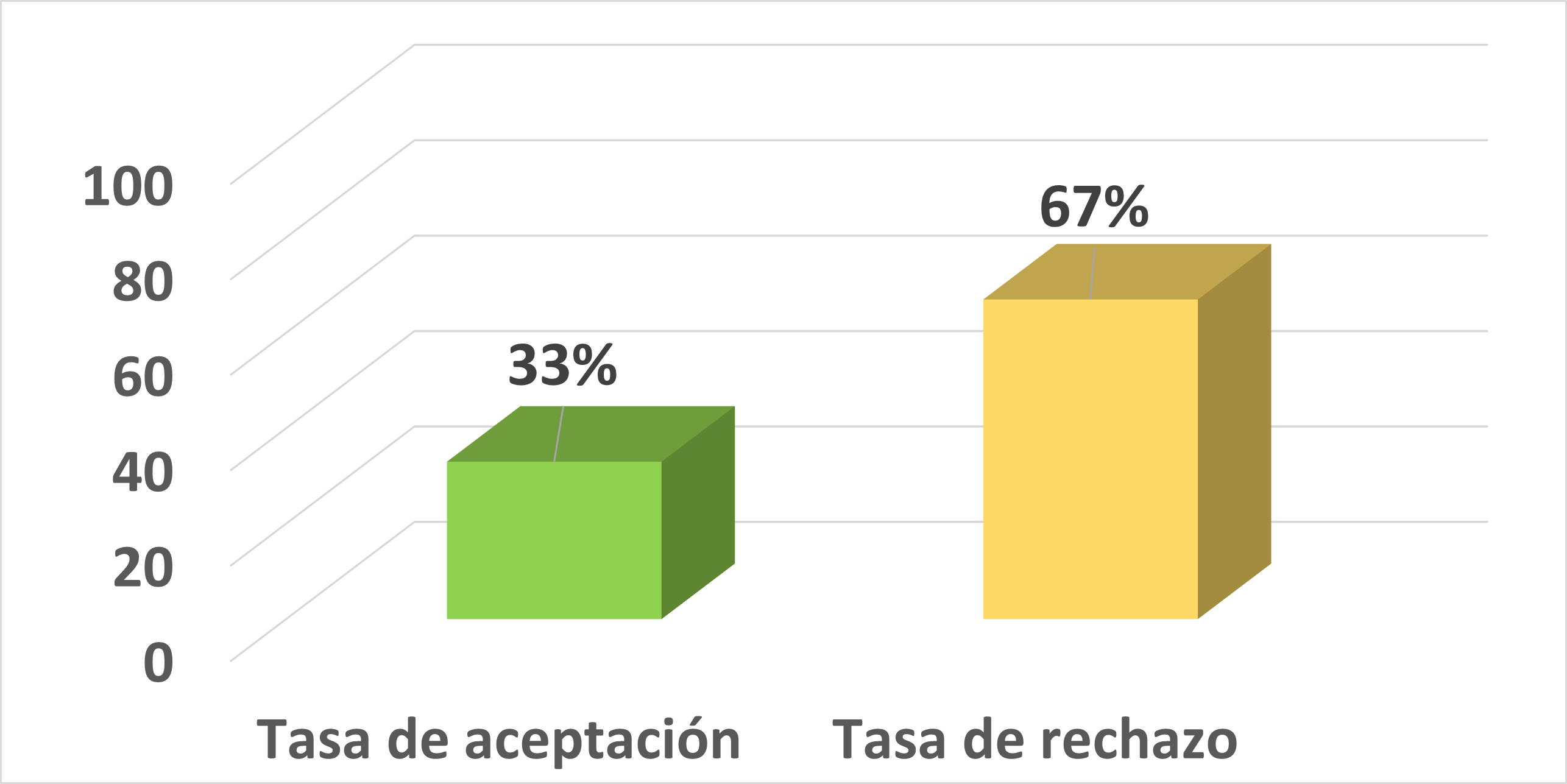Modelo de programación lineal de operación y multiárea de un sistema eléctrico de potencia
DOI:
https://doi.org/10.54753/cedamaz.v12i2.1553Palabras clave:
Despacho económico, Programación líneal, Sistemas eléctricos de potencia, eneración distribuida, Energías renovablesResumen
El modelo de programación lineal de operación (PLO) considera desde el suministro de energía hasta los consumidores finales. Al resolver el PLO de un sistema eléctrico de potencia (SEP), el objetivo es encontrar la asignación óptima o despacho económico (DE) de la potencia de salida entre las tecnologías de generación convencional y la generación de energía renovable (específicamente la eólica) para cubrir carga del sistema a un mínimo costo operacional. En el modelo propuesto se ha empleado un enfoque determinista-lineal con relaciones matemáticas que utilizan variables como: estado de operación de la unidad de generación en función del tiempo, despacho de potencia de centrales eólicas y convencionales, déficit eléctrico, transferencia de potencia entre las barras, pérdidas en las líneas de transmisión. Adicionalmente, se incluyen factores y ecuaciones matemáticas para enfrentar la variabilidad del viento. Se presenta un caso de estudio didáctico para explicar la estructura propuesta.Citas
Economic Dispatch, Linear Programming, Electrical Power Systems, Distributed Generation, Renewable Energy.
Ackermann, T., Andersson, G., y Söder, L. (2001). Distributed generation: a definition. Electric power systems research, 57(3), 195–204. DOI: https://doi.org/10.1016/S0378-7796(01)00101-8
Aliari, Y., y Haghani, A. (2016). Planning for integration of wind power capacity in power generation using stochastic optimization. Renewable and Sustainable Energy Reviews, 59, 907–919. DOI: https://doi.org/10.1016/j.rser.2016.01.018
Arboleya, P., Diaz, G., y Coto, M. (2012). Unified ac/dc power flow for traction systems: A new concept. IEEE Transactions on vehicular technology, 61(6), 2421–2430. DOI: https://doi.org/10.1109/TVT.2012.2196298
Ari kahan. (2020). International energy outlook 2021 (ieo2021) (Inf. Téc.). www.eia.gov.
Bitaraf, H., y Rahman, S. (2017). Reducing curtailed wind energy through energy storage and demand response. IEEE Transactions on Sustainable Energy, 9(1), 228–236. DOI: https://doi.org/10.1109/TSTE.2017.2724546
Cassola, F., Burlando, M., Antonelli, M., y Ratto, C. F. (2008). Optimization of the regional spatial distribution of wind power plants to minimize the variability of wind energy input into power supply systems. Journal of Applied Meteorology and Climatology, 47(12), 3099–3116. DOI: https://doi.org/10.1175/2008JAMC1886.1
Chen, P., Siano, P., Bak-Jensen, B., y Chen, Z. (2010). Stochastic optimization of wind turbine power factor using stochastic model of wind power. IEEE transactions on Sustainable Energy, 1(1), 19–29. DOI: https://doi.org/10.1109/TSTE.2010.2044900
Chowdhury, M. M., Haque, M. E., Aktarujjaman, M., Negnevitsky, M., y Gargoom, A. (2011). Grid integration impacts and energy storage systems for wind energy applications—a review. En 2011 ieee power and energy society general meeting (pp. 1–8). DOI: https://doi.org/10.1109/PES.2011.6039798
Cui, X., y Yan, Y. (2012). Economic dispatching problem with group and resource considerations. En 2012 24th chinese control and decision conference (ccdc) (pp. 4114–4117).
Goldemberg, J. (2012). The case for renewable energies. En enewable energy (pp. 31–42). Routledge.
Hetzer, J., David, C. Y., y Bhattarai, K. (2008). An economic dispatch model incorporating wind power. IEEE Transactions on energy conversion, 23(2), 603–611. DOI: https://doi.org/10.1109/TEC.2007.914171
Ibitoye, F. I., y Adenikinju, A. (2007). Future demand for electricity in nigeria. Applied Energy, 84(5), 492–504. DOI: https://doi.org/10.1016/j.apenergy.2006.09.011
Jordehi, A. R., Tabar, V. S., y Jirdehi, M. A. (2022). A two stage stochastic model for security-constrained market clearing with wind power plants, storage systems and elastic demands. Journal of Energy Storage, 51, 104550. DOI: https://doi.org/10.1016/j.est.2022.104550
Joskow, P. L. (2020). Transmission capacity expansion is needed to decarbonize the electricity sector efficiently. Joule, 4(1), 1–3. DOI: https://doi.org/10.1016/j.joule.2019.10.011
Larrahondo, D., Moreno, R., Chamorro, H. R., y Gonzalez-Longatt, F. (2021). Comparative performance of multiperiod acopf and multi-period dcopf under high integration of wind power. Energies, 14(15), 4540. DOI: https://doi.org/10.3390/en14154540
Liu, L., Wang, Z., Wang, Y., Wang, J., Chang, R., He, G., (2020). Optimizing wind/solar combinations at finer scales to mitigate renewable energy variability in china. Renewable and Sustainable Energy Reviews, 132, 110151. DOI: https://doi.org/10.1016/j.rser.2020.110151
Lopes, J. P., Hatziargyriou, N., Mutale, J., Djapic, P., y Jenkins, N. (2007). Integrating distributed generation in to electric power systems: A review of drivers, challenges and opportunities. Electric power systems research, 77(9), 1189–1203. DOI: https://doi.org/10.1016/j.epsr.2006.08.016
Lorente de la Rubia, J. (2011). Estudio sobre el estado actual de las"smart grids" (B.S. thesis).
Loukatou, A., Howell, S., Johnson, P., y Duck, P. (2018). Stochastic wind speed modelling for estimation of expected wind power output. Applied energy, 228, 1328–1340. DOI: https://doi.org/10.1016/j.apenergy.2018.06.117
Maheshwari, N., Chandrasekaran, M., y Babu, R. D. (2013). Optimization of electrical power using solar and wind energy systems. En 2013 7th international conference on intelligent systems and control (isco) (pp. 172–175). DOI: https://doi.org/10.1109/ISCO.2013.6481143
Pappala, V. S., Erlich, I., Rohrig, K., y Dobschinski, J. (2009). A stochastic model for the optimal operation of a wind-thermal power system. IEEE transactions on Power Systems, 24(2), 940–950. DOI: https://doi.org/10.1109/TPWRS.2009.2016504
Romero, S. R., Santos, A. C., y Gil, M. A. C. (2012). Eu plans for renewable energy. an application to the Spanish case. Renewable Energy, 43, 322–330. DOI: https://doi.org/10.1016/j.renene.2011.11.033
Sharpley, R. (2000). Tourism and sustainable development: Exploring the theoretical divide. Journal of Sustainable tourism, 8(1), 1–19. DOI: https://doi.org/10.1080/09669580008667346
Soroudi, A. (2017). Power system optimization modeling in gams (Vol. 78). Springer. Sovacool, B. K. (2009). The intermittency of wind, solar, and renewable electricity generators: Technical barrier or rhetorical excuse? Utilities Policy, 17(3-4), 288–296. DOI: https://doi.org/10.1016/j.jup.2008.07.001
Suberu, M. Y., Mustafa, M. W., y Bashir, N. (2014). Energy storage systems for renewable energy power sector integration and mitigation of intermittency. Renewable and Sustainable Energy Reviews, 35, 499–514. DOI: https://doi.org/10.1016/j.rser.2014.04.009
Sun, D., Li, X., Yang, S., Zhao, L., Wang, Y., Yang, B., Sun, Y. (2020). Integrated generation-grid-load economic dispatch considering demand response. En 2020 ieee/ias industrial and commercial power system asia (i&cps asia) (pp. 375–379). DOI: https://doi.org/10.1109/ICPSAsia48933.2020.9208351
Svoboda, A. J., Tseng, C.-L., Li, C.-a., y Johnson, R. B. (1997). Short-term resource scheduling with ramp constraints [power generation scheduling]. IEEE Transactions on Power Systems, 12(1), 77–83. DOI: https://doi.org/10.1109/59.574926
Trodden, P. A., Bukhsh, W. A., Grothey, A., y McKinnon, K. I. (2013). Optimization-based islanding of power networks using piecewise linear ac power flow. IEEE Transactions on Power Systems, 29(3), 1212–1220. DOI: https://doi.org/10.1109/TPWRS.2013.2291660
Tyagi, R. (2015). Integrating renewables in electricity markets. JSTOR.
Vespucci, M. T., Maggioni, F., Bertocchi, M. I., y Innorta, M. (2012). A stochastic model for the daily coordination of pumped storage hydro plants and wind power plants. Annals of operations research, 193(1), 91–105. DOI: https://doi.org/10.1007/s10479-010-0756-4
Wu, W., Wang, K., Li, G., y Hu, Y. (2014). A stochastic model for power system transient stability with wind power. En 2014 ieee pes general meeting| conference & exposition (pp. 1–5). DOI: https://doi.org/10.1109/PESGM.2014.6939022
Zheng, W., Wu, W., Zhang, B., Li, Z., y Liu, Y. (2015). Fully distributed multi-area economic dispatch method for active distribution networks. IET generation, transmission & distribution, 9(12), 1341–1351. DOI: https://doi.org/10.1049/iet-gtd.2014.0904
Zhu, J., Xiong, X., Lou, S., Liu, M., Yin, Z., Sun, B., y Lin, C. (2008). Two stage approach for economic power dispatch. En 2008 ieee power and energy society general meeting-conversion and delivery of electrical energy in the 21st century (pp. 1–5).
Publicado
Cómo citar
Número
Sección
Licencia
Derechos de autor 2022 CEDAMAZ

Esta obra está bajo una licencia internacional Creative Commons Atribución-NoComercial-SinDerivadas 4.0.
Aquellos autores/as que tengan publicaciones con esta revista, aceptan los términos siguientes:
-
Luego que el artículo científico es aceptado, para su publicación el o la autora aceptan ceder los derechos de la primera publicación a la Revista CEDAMAZ, conservando sus derechos de autor. Se permite la reproducción total o parcial de los textos que se publican siempre y cuando sea sin fines de lucro. Cuando se ejecute la reproducción total o parcial de los artículos científicos aceptados y publicados en la revista CEDAMAZ, se debe citar la fuente completa y la dirección electrónica de la publicación.
-
Los artículos científicos aceptados y publicados en la revista CEDAMAZ pueden ser depositados por los autores de manera integra en cualquier repositorio sin fines comerciales.
-
Los autores no deben distribuir los artículos científicos aceptados, pero que todavía no han sido publicados oficialmente por la revista CEDAMAZ. En el caso de incumplir esta norma implica el rechazo del articulo científico.
- La publicación de su obra, el cuál estará simultáneamente sujeto a la Licencia de reconocimiento de Creative Commons









